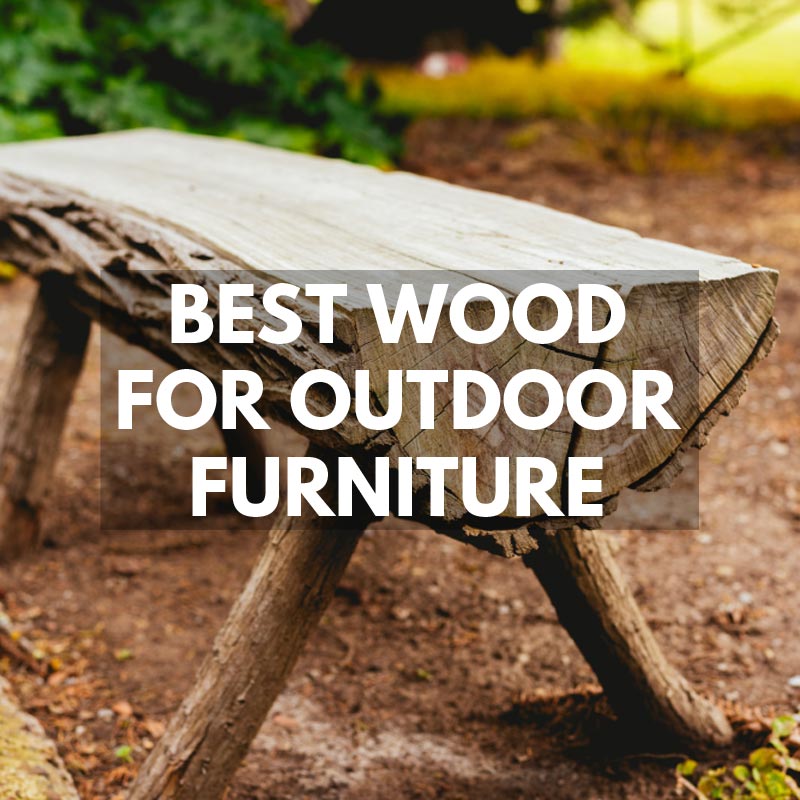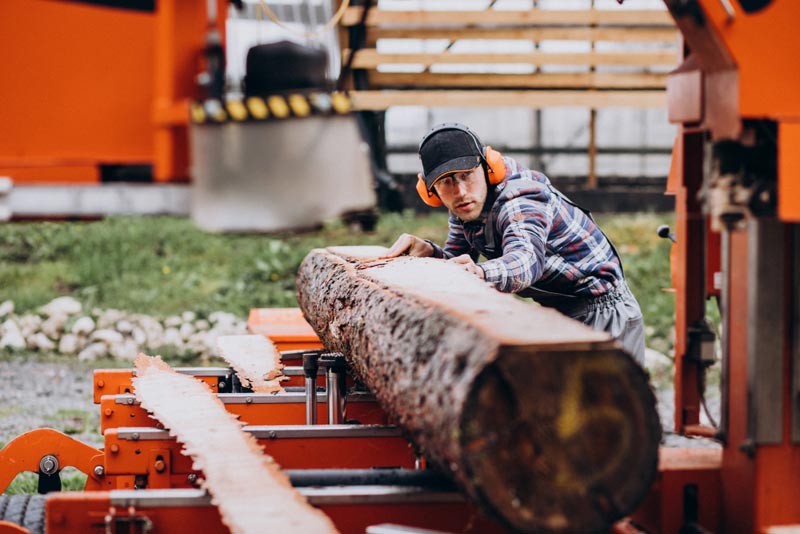
In this guide to the best wood for outdoor furniture, we share the most durable and long-lasting types of timber you can leave out all year. You will get a condensed masterclass on identifying and selecting the best wood for making garden furniture.
Choosing the right wood for outdoor furniture can make a big difference in the longevity and overall look of your furniture. With so many options available, it can be difficult to know which wood is the best fit for your needs. In this article, we will explore some of the best types of wood for outdoor furniture and their unique characteristics.
Best Wood for Outdoor Furniture
Cedar is one of the best woods to make outdoor benches, tables, and chairs. It is easy to work with and has great value when you are on a budget. A benefit of Cedar is that it is lightweight, which is a bonus if you have to move your furniture regularly like I do to mow the grass.
One of the most popular woods for outdoor furniture is teak. Teak is known for its durability and resistance to weather and insects. It has a natural oil content that helps protect it from outdoor elements, making it a great choice for outdoor furniture that will be exposed to the elements year-round. However, teak is also one of the most expensive woods, and its popularity has led to issues with deforestation in some areas.
Another great option for outdoor furniture is eucalyptus. Eucalyptus is a sustainable wood that is often used as a less expensive alternative to teak. It is also naturally resistant to weather and insects, making it a great choice for outdoor furniture. However, it does require regular maintenance to keep its natural color and prevent it from fading or turning gray over time.
7 Types of Wood for Outdoor Furniture

Here are the best types of wood you can use for outdoor furniture and a brief explanation of its properties:
Teak
Teak is a popular choice for outdoor furniture due to its durability and resistance to rot, insects, and weather. It is a hardwood that contains natural oils that protect it from damage caused by moisture and sunlight. Teak furniture can last for decades and requires minimal maintenance.
Cedar
Cedar is a softwood that is lightweight and easy to work with. It is also resistant to rot and insects, making it a good choice for outdoor furniture in humid locations. Cedar has a natural reddish-brown color that can be preserved with sealant or allowed to weather to a silvery-gray color over time.
Eucalyptus
Eucalyptus is a hardwood that is similar in appearance to teak but is less expensive. It is resistant to rotting which makes it ideal for lawn furniture. Insects aren’t interested in eating it or laying eggs in it (unless you live in Australia), and Eucalyptus outdoor furniture can last for many years with proper maintenance. Simply treat it with oil or sealant to preserve its natural reddish-brown color once a year, and that’s it.
Acacia
Acacia is a hardwood that is known for its strength and durability. It takes a long time to even start to rot and is insect resistant, so it can last for many years with a little maintenance. Acacia furniture can be treated with oil or sealant to preserve its natural reddish-brown color.
Redwood
Redwood is a beautiful and strong wood with a high resistance to decay and insects. It’s an excellent choice for outdoor furniture but may be more expensive and less readily available compared to other options. Because the tree grows so large, you can incredibly wide slabs of redwood.
Mahogany
Mahogany is a hardwood that is known for its beauty and durability. It won’t easily rot, and insects will rarely make it their home. Mahogany furniture can last for many years with proper care, but because it is so expensive, you are unlikely to use it for your backyard furniture. Mahogany wood being left outside must be treated with oil or sealant to preserve its integrity and natural color.
Pine
Pine is a softwood that is commonly used for outdoor furniture because it looks good and is relatively cheap. It is lightweight and easy to work with, but it is not as durable as hardwoods like teak or cedar. Pine furniture can be treated with oils, sealants, or paint to protect it from the elements. Just don’t burn pine that has been heavily treated over multiple years, as it will give off toxic smoke.
back to menu ↑Factors to Consider

When choosing the best wood for outdoor furniture, it is important to consider factors such as durability, resistance to rot and insects, and maintenance requirements. Each type of wood has its own unique characteristics and advantages, so it is important to choose the one that best fits your needs and budget.
Durability
Durability is crucial with outdoor furniture made from wood because it needs to withstand all four seasons of the year unless you plan to cover it up or store it in winter. Hardwoods such as teak, cedar, and redwood are known for their durability and can last for years with proper care. Softwoods such as pine and spruce are less durable and may require more maintenance over time.
Resistance to Weather and Insects
When looking for wooden outdoor furniture, natural resistance to weather and insects is a massive benefit. In some states, the intense summer heat might be your biggest threat, but in other states, you might suffer from heavy snowfall or even certain types of bugs that destroy anything made from hardwood.
Teak is known for its natural resistance to insects and decay. Cedar and redwood also naturally resist insects and decay, while pine and spruce are more susceptible to damage from insects and weather. Choosing a wood that can withstand the climate in your area is important.
Maintenance
Some types of wood are easier to maintain, while others might require more effort but will ultimately last longer. Hardwoods such as teak, cedar, and redwood require less maintenance than softwoods like pine and spruce. Softwood outdoor furniture often requires a lot of sanding down and treating to ensure the surface is fully sealed. However, all outdoor furniture will require some level of maintenance over time, such as cleaning and resealing.
Cost
The cost of the wood might not be too important, or it might be the deciding factor. It depends on your budget. Hardwoods such as teak, cedar, and redwood are generally more expensive than softwoods such as pine and spruce. However, the durability and longevity of hardwoods may make them a better long-term investment.
It’s important to consider all of these factors when choosing the best wood for your outdoor furniture. By selecting a wood that is durable, resistant to weather and insects, low maintenance, and within your budget, you can ensure that your outdoor furniture will last for years to come.
back to menu ↑Types of Wood You Should Avoid for Outdoor Furniture
Outdoor furniture requires the most durable materials if left out all year; not all types of wood are created equal. Some woods are unsuitable for outdoor use, as they can quickly deteriorate and rot when exposed to the elements. Here are some types of wood you should avoid using for outdoor furniture:
- Poplar: This wood is not very durable and can easily rot when exposed to moisture.
- Fir: This wood is not very durable and can easily warp and crack when exposed to moisture and sunlight.
- Spruce: Spruce is a softwood that is prone to warping, cracking, and rotting when exposed to moisture.
- Cypress: While cypress is a popular wood for outdoor furniture, it can be prone to rotting if not properly sealed and maintained.
By avoiding these types of wood, you can ensure that your outdoor furniture will last for many years to come. Instead, consider using one of the many durable and weather-resistant kinds of wood that are available, such as acacia, teak, cedar, or oak.
We hope this guide to the best wood for outdoor furniture has helped you whittle down your choices to something that will last a long time.






